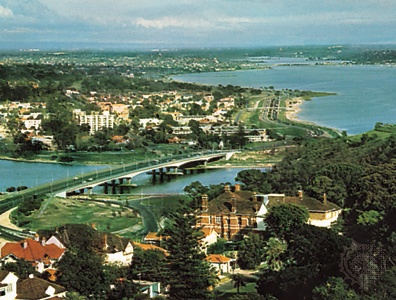estuary
coastal feature
 partly enclosed coastal body of water in which river water is mixed with seawater. In a general sense, the estuarine environment is defined by salinity boundaries rather than by geographic boundaries. Many coastal features that are designated by other names are in fact estuaries. For example, various coastal embayments, such as Chesapeake Bay and Galveston Bay, also are estuaries because fresh and salt water undergo considerable mixing. Moreover, most of the world's fjord systems are estuaries, as are large semienclosed tidal-flat regions and coastal marshes (e.g., the Waddenzee area of The Netherlands).
partly enclosed coastal body of water in which river water is mixed with seawater. In a general sense, the estuarine environment is defined by salinity boundaries rather than by geographic boundaries. Many coastal features that are designated by other names are in fact estuaries. For example, various coastal embayments, such as Chesapeake Bay and Galveston Bay, also are estuaries because fresh and salt water undergo considerable mixing. Moreover, most of the world's fjord systems are estuaries, as are large semienclosed tidal-flat regions and coastal marshes (e.g., the Waddenzee area of The Netherlands).A brief treatment of estuaries follows. For full treatment, see river: Estuaries (river).
Estuaries have long been important as harbour (harbours and sea works) sites and centres of commerce. Some of the oldest continuous civilizations have flourished in such estuarine environments as the lower region of the Tigris and Euphrates (Tigris-Euphrates river system) rivers, the Po River delta region of Italy, the Nile (Nile River) delta, the Ganges (Ganges River) delta, and the lower Huang He valley. Developing civilizations soon discovered that the logical site for commercial seaports was the seawardmost point of the major river systems. Such cities as London ( Thames River), New York City ( Hudson River), Montreal (St. Lawrence River (Saint Lawrence River and Seaway)), Hamburg ( Elbe River), and Bordeaux ( Gironde estuary) have developed on estuaries and have become important centres of commerce.
The geologic processes that form an estuary are extremely complex and varied, but it is clear that the existence of an estuary is largely dependent on the position of sea level relative to the freshwater discharge. If sea level were lowered, the estuarine zone would migrate seaward at the interface of the marine water and the edge of the newly exposed land area. Such migration has occurred in the past as a consequence of the Earth's several glaciations. For each glaciation, the primary source of moisture has been the oceans. Whenever sea level fell, the estuarine environment at the continental margin was forced to migrate in a seaward direction.
About 18,000 years ago the Wisconsin Glacial Stage attained its maximum, and glacial melting began. The seas rose, forcing the estuarine environment to migrate back up the continental shelf. During the period of lowered sea level, some rivers had become entrenched in the continental shelf and deepened their valleys, which were soon flooded by the rising marine waters, forming a typical drowned river estuary. In areas such as Norway and parts of the coast of British Columbia, Can., valley glaciers had deepened river valleys. These narrow drowned glacial valleys became the modern fjord estuaries as sea level rose.
The geomorphology (i.e., form) of an estuarine basin is usually developed by one of three agents: (1) fluvial or glacial erosion, (2) fluvial and marine deposition, or (3) tectonic activity. The last of these involves the down-faulting of a coastal area or the broad local subsidence of a stretch of coastline, as in the case of San Francisco Bay (northern Calif.).
- Cabinet of President Rutherford B. Hayes
- Cabinet of President Theodore Roosevelt
- Cabinet of President Thomas Jefferson
- Cabinet of President Ulysses S. Grant
- Cabinet of President Warren G. Harding
- Cabinet of President William Henry Harrison
- Cabinet of President William Howard Taft
- Cabinet of President William McKinley
- Cabinet of President Woodrow Wilson
- Cabinet of President Zachary Taylor
- Cabinets of the presidents of the United States
- cable
- Cable, George W.
- cable modem
- Cable News Network
- cable television
- Caboche, Simon
- cabochon cut
- Caboolture
- Cabot Family
- Cabot, George
- Cabot, John
- Cabot, Sebastian
- Cabot Strait
- Cabra